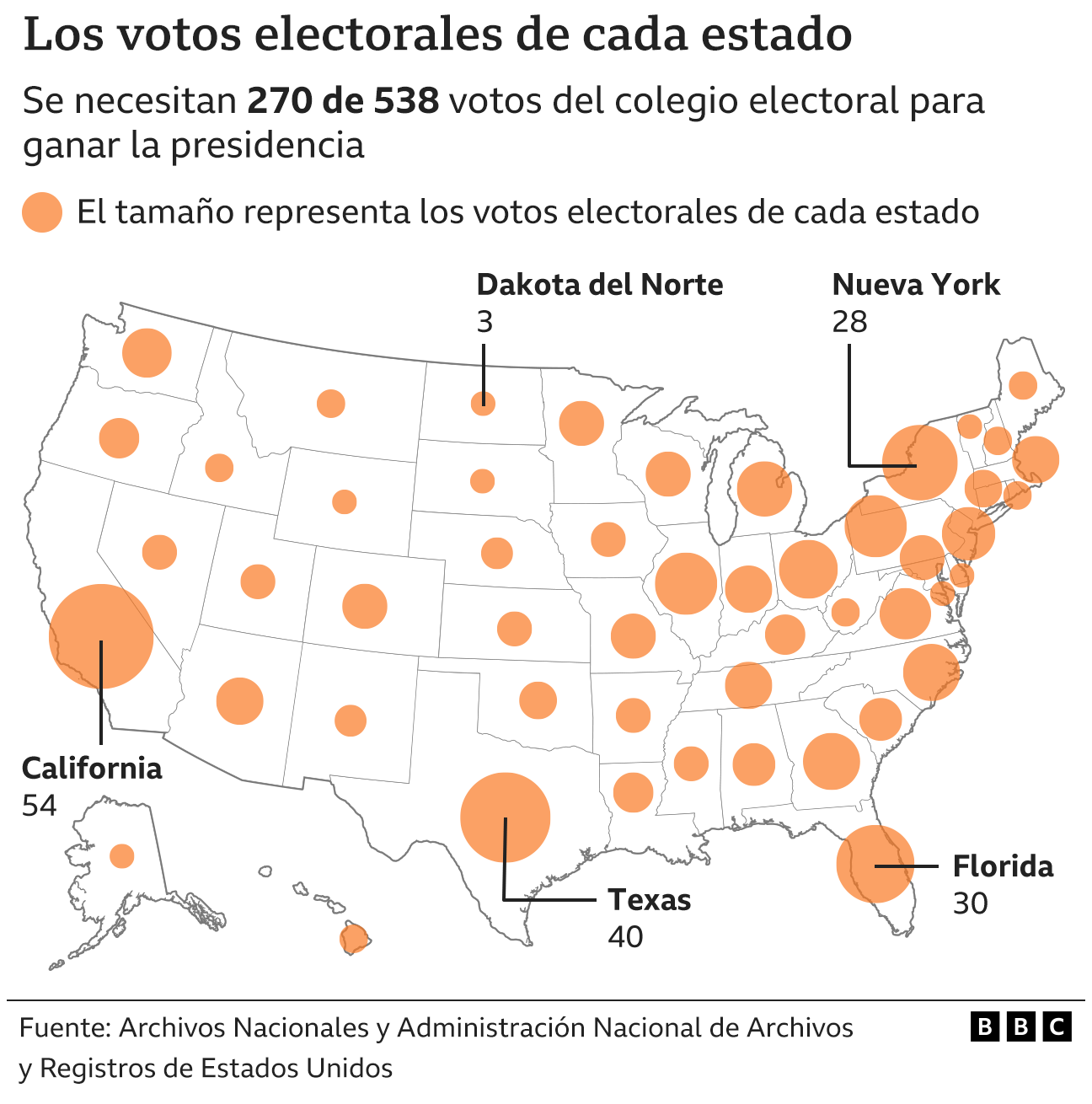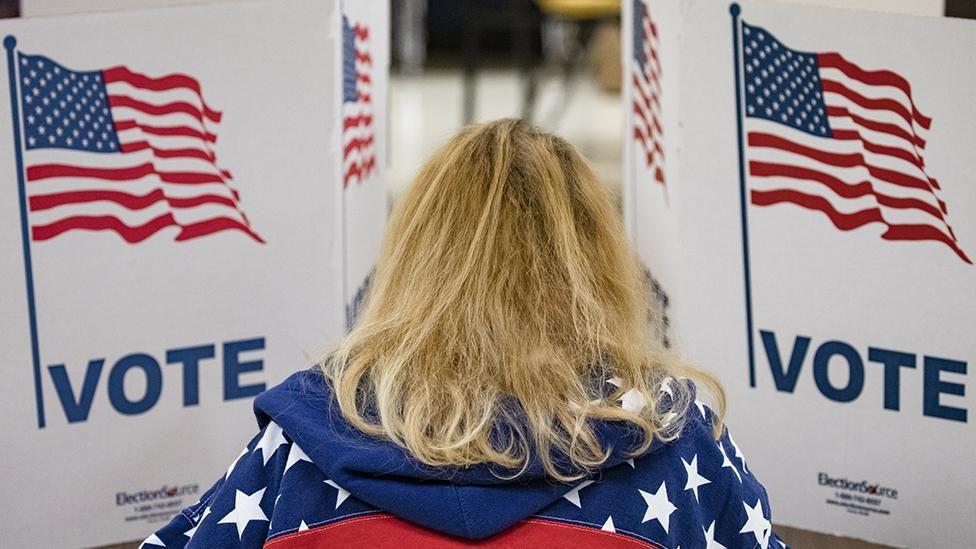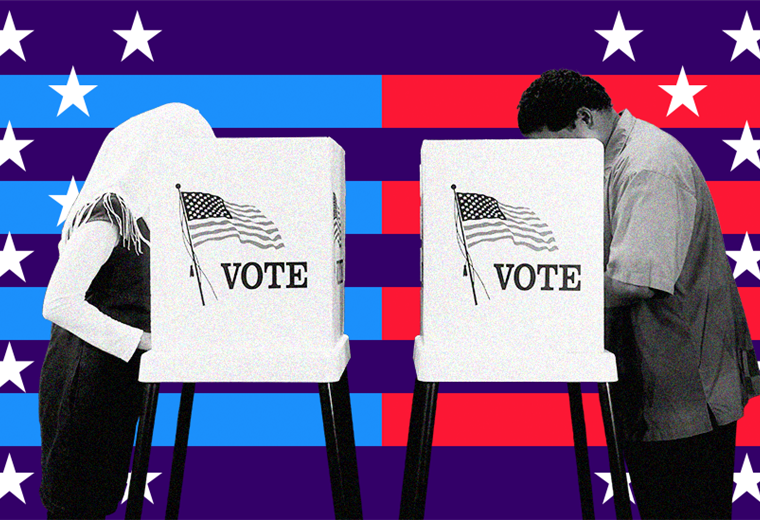October 21, 2024, 3:46 PM
October 21, 2024, 3:46 PM
In the United States presidential election, the winner may not be the candidate who receives the most votes from the public.
And the president of the country is not elected directly by the voters, but by a body known as the Electoral College.
We explain what this system consists of.

What is the Electoral College?
When Americans take part in the presidential election on November 5, most will vote for Democrat Kamala Harris or Republican Donald Trump.
But those votes won’t directly determine who wins. Instead of a national race, this is a state-by-state race.
So, Winning in one of the 50 states means the candidate gets all of the electoral votes in that state.; That is, all the votes it contributes in the Electoral College. The number varies state by state, as it is determined based on the population.
The Electoral College has in mind total 538 votes. And to proclaim himself winner of the elections and therefore president, a candidate needs to get 270 or more.
His running mate becomes vice president.

How does it work?
Each state has a specific number of electoral votes, roughly commensurate with the size of its population.
California has the most, 54, while a handful of sparsely populated states like Wyoming, Alaska and North Dakota (and the nation’s capital, Washington, DC) have three.
With very few exceptions, Each state awards all of its Electoral College votes to the candidate who has won in its territory.; that is, the one who has achieved the majority of the popular vote at the state level.
For example, if a candidate wins 50.1% of the vote in Texas, they are awarded that state’s 40 electoral votes.
A candidate who won a state by an overwhelming majority would obtain the same number of electoral votes as if he had won by a single vote.

Is it possible to obtain a majority at the national level but lose the elections?
Yes. It is possible to win elections without having obtained a majority at the national level, only for having prevailed in some key states.
This is what happened to the Republican Donald Trump in 2016who was declared the winner despite obtaining almost three million fewer votes than his rival, Democrat Hillary Clinton.
And in 2000, Republican George W. Bush defeated Democrat Al Gore despite the latter surpassing him by half a million in the popular vote.
Only three other presidents have been elected without winning the popular vote, all of them in the 19th century.

Why is it called the Electoral College?
By “college” he refers to the group of people who are responsible for casting state votes, known as electors.
This system is only used to elect the president; all other American elections are decided by popular vote.

How many votes does each state contribute?


Do voters have to vote for the candidate who won their state?
In some states, voters could theoretically vote for the candidate they prefer, regardless of who voters supported.
But in practice, voters They almost always vote for the candidate who gets the most votes, Be it 10 more or a million.
If a voter votes against the presidential candidate who won in his state, he is described as an “infidel.”
In 2016, seven Electoral College votes were cast this way, but they did not change the outcome of the election.
In some states, “faithless” voters can be fined or prosecuted.

What happens if there is a tie in the Electoral College?
If the candidates are equal in votes in the Electoral College, it is the House of Representativesthe lower house of the US Parliament, which elects the president.
Although this has only happened once, in 1824.
Given the current dominance of the Republican and Democratic parties, it is extremely unlikely let this happen today.

Why was this system chosen?
When the United States Constitution was written in 1787, a national popular vote to elect a president was virtually impossible due to the size of the country and the lack of reliable communication methods.
Therefore, the framers of the Constitution created the Electoral College system.
It was a popular decision in the southern states, where slaves made up a large portion of the population.
These could not vote, but were counted as part of the population, which gave the southern states very great influence.


What are its advantages and disadvantages?
- Smaller states remain important for candidates.
- Candidates do not need to travel across the country, but can focus on key states.
- Recounts are easier.
- The winner of the popular vote can lose the election.
- Some voters feel their individual vote doesn’t matter.
- The so-called “pendulum states” concentrate too much power.

What are “pendulum states”?
Most states always vote for the same party in every election.
That’s why presidential candidates focus their campaign efforts on specific “swing states,” also called swing states. hingethat They could lean one way or anotherinstead of trying to win votes across the country.
In 2024, the main disputed states are Arizona, North Carolina, Georgia, Michigan, Nevada, Pennsylvania and Wisconsin.

What are fake voters?
It’s a term many Americans are familiar with since 2020, when Republicans pro-Trump in seven states they will create their own electors in a attempt to overturn the results of the elections.
In some cases, they created and signed official-looking documents or arrived at state capitals on Dec. 14, when voters across the country gathered to officially cast their votes.
Some of those involved have faced legal proceedings and investigations are still ongoing.

And remember that you can receive notifications in our app. Download the latest version and activate them.


















